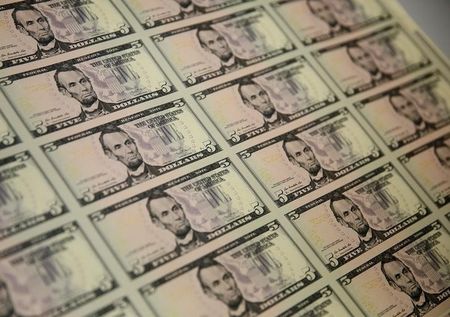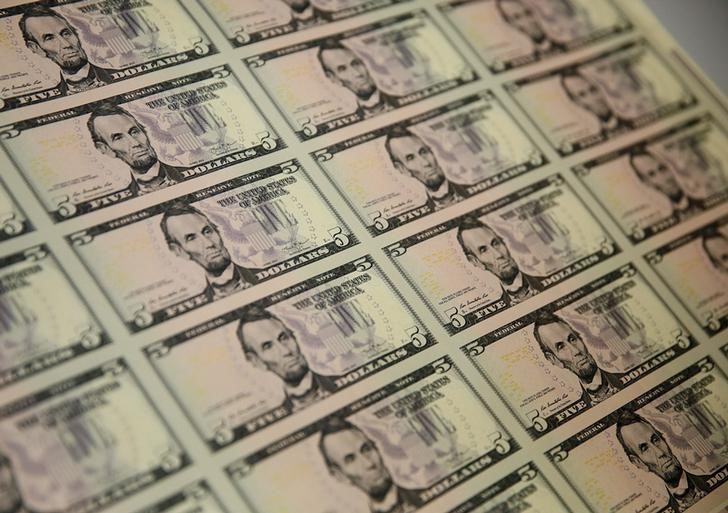Forex
Dollar edges lower; euro hit by weak German factory orders


© Reuters.
Investing.com – The U.S. dollar edged lower in early European trade Wednesday, but remained near a two-week high, ahead of key employment data, while the euro headed lower after weak German factory orders.
At 04:35 ET (09:35 GMT), the Dollar Index, which tracks the greenback against a basket of six other currencies, traded 0.1% lower at 103.925, having climbed 0.3% overnight.
The index is up 0.5% this month, after sliding 3% in November, its steepest monthly decline in a year.
Labor market data in focus
Recent data has generally pointed towards a slowing U.S. economy, although signs still point to a likely soft landing.
Tuesday’s release showed U.S. fell to more than a 2-1/2-year low in October, the strongest sign yet that higher interest rates were dampening demand for workers.
The labor market will remain in focus Wednesday, with the later in the day, setting up Friday’s monthly report.
“We suspect markets are holding a more cautious stance as we head into the key U.S. payroll figures on Friday and the Fed meeting next week, where there is a good probability the FOMC will deliver a protest against rate cut bets – especially if data fails to turn lower,” said analysts at ING, in a note.
Euro continues to weaken
In Europe, edged lower to 1.0794, close to Tuesday’s three-week low, after slumped 3.7% on the month in October, a sharp drop after gaining 0.7% the prior month.
Recent data has pointed to the eurozone heading into a recession in the final quarter of the year, as its economy contracted 0.1% in the third quarter, according to official data.
Eurozone are seen rising 0.2% monthly in October later in the session, an annual drop of 1.1%, as consumers in the region continue to struggle, ahead of the festive period.
This economic slowdown, coupled with inflation across the euro zone falling more quickly than most anticipated, has led many to think that the could deliver its first rate cut by March.
“Shorting the euro appears to be one of the most popular bets in FX at the moment,” ING added.
rose 0.1% to 1.2604, ahead of the release of the latest Bank of England .
Yuan hit by Moody’s downgrade
In Asia, rose 0.4% to 0.6576, recovering from two days of steep losses even as data showed Australia’s grew less than expected in the third quarter, hit chiefly by declining export demand in China.
traded 0.1% higher to 147.21, steadying after the yen recorded a sharp recovery against the dollar in recent sessions.
traded 0.2% higher at 7.1589, with sentiment towards the yuan battered by ratings agency Moody’s, which downgraded the country’s credit outlook to negative and flagged increased economic risks from a property market downturn.

 Forex3 years ago
Forex3 years agoForex Today: the dollar is gaining strength amid gloomy sentiment at the start of the Fed’s week

 Forex3 years ago
Forex3 years agoUnbiased review of Pocket Option broker

 Forex3 years ago
Forex3 years agoDollar to pound sterling exchange rate today: Pound plummeted to its lowest since 1985

 Forex3 years ago
Forex3 years agoHow is the Australian dollar doing today?

 Cryptocurrency3 years ago
Cryptocurrency3 years agoWhat happened in the crypto market – current events today

 World3 years ago
World3 years agoWhy are modern video games an art form?

 Commodities3 years ago
Commodities3 years agoCopper continues to fall in price on expectations of lower demand in China

 Economy3 years ago
Economy3 years agoCrude oil tankers double in price due to EU anti-Russian sanctions

























